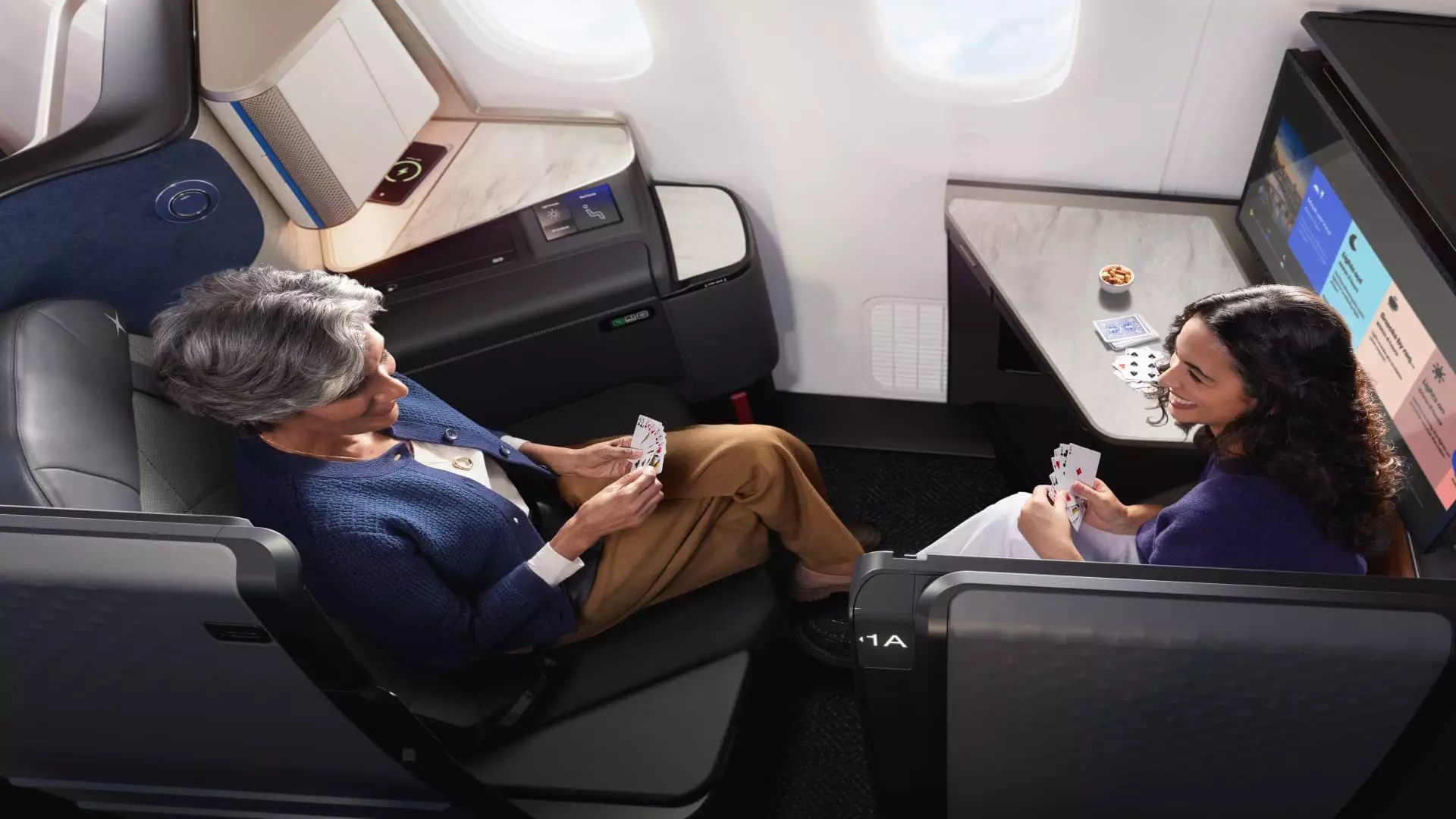In a climate where competition drives innovation, U.S. airlines are currently locked in a fierce battle to capture the lucrative international business-class market. The stakes have never been higher as airlines toss aside conventionality, deploying an array of opulent offerings to woo customers who can afford to pay for premium travel experiences. Gone are the days when a basic seat would suffice; airlines like American, United, and Delta have begun to redefine what it means to fly business class.
American Airlines is set to launch an upgraded version of their business-class “suites,” distinguished by a coveted sliding door—an emblem of privacy and exclusivity that today’s affluent flyers seem to demand. This latest iteration will offer features like a “trinket tray” and a wireless charging pad. In a bid to enhance its appeal, American has claimed that these suites will provide a staggering 42% more “living area” than before. The airline’s focus on such luxuries signals a shift not just in marketing, but in passenger expectations themselves.
When Bigger is Better
United Airlines is not standing idly by. It aims to outshine its rivals with the introduction of the “Polaris Studio,” which boasts even larger space and additional amenities. The ambitious promise of 25% more suite space is a clear indicator that United understands the customer’s desire for more than just a seat; they want a sanctuary in the sky. Such a move could be seen as a response to rising competition and increasing consumer expectations for business-class offerings.
This trend towards larger, more amenity-rich spaces isn’t only confined to domestic carriers. International airlines are also raising the bar. Whether it’s Virgin Atlantic with their “Retreat Suite” or Lufthansa’s two-person suite option, all major players are catering to well-heeled travelers who expect not just comfort but a personalized experience. Even Etihad’s extravagant “The Residence” epitomizes the lengths to which airlines will go, offering multi-room luxury at a price point that can reach $20,000 for a single journey.
The Economic Underpinning of Luxury Travel
However, even as airlines make these major investments in premium products, there looms the specter of economic uncertainty. With ticket prices continuously climbing—American’s new suite ticket from Philadelphia to London is a staggering $5,747 while coach runs around $867—the question arises: can airlines justify these expenses against a backdrop of fluctuating demand?
Business-class tickets have always been a splurge for passengers, but as Robert Mann of R.W. Mann & Co. points out, the stark decline in the economy class experience has pushed travelers towards more luxurious arrangements. In this way, airlines are banking on the assumption that affluent consumers will continue to prioritize premium experiences even in economic downturns. Wealthy passengers tend to be more resilient during recessions, allowing United, American, and Delta to rest easy, despite the rest of the industry’s financial strains.
Investment in Experience Over Just Seating
The arms race extends beyond seating arrangements; airlines are also keen on enhancing the so-called “soft product.” Updated catering and new comforts such as noise-canceling headphones signify a broader understanding of what it means to curate a memorable flight. American’s recent decision to allow passengers to retain their Bang & Olufsen headphones until landing is a subtle acknowledgment of the customer experience’s importance. Every small detail matters, from meal presentation to the availability of gourmet offerings.
United’s announcement about upgrading its food and beverage selection speaks volumes about the meticulous nature of airlines in enhancing their business-class offerings. By focusing not just on what passengers sit on but how they feel during the journey, airlines are setting new standards for comfort and luxury in the air.
The Dilemma of Privilege in Aviation
Despite these advancements, it’s worth noting that some airlines are still lagging behind when it comes to providing uncompromised luxury. Emirates, for instance, continues to flaunt superior features like onboard showers and extravagant caviar service in their first-class offerings. While U.S. airlines make strides towards enhancing their luxury cabins, the question looms large: are these even sufficient to match the level of international competitors?
There will always be passengers who value service simplicity more than exquisite details. As Mann aptly points out, no amount of luxury can salvage the experience of delayed flights. Ultimately, the balancing act for airlines will involve offering a first-rate journey while ensuring that operational challenges do not tarnish their lavish promises.
In essence, the dialogue around business-class travel is shifting. It is no longer simply about transportation; it is about creating an immersive experience that captivates the consumer. In a world of high stakes and lofty ambitions, the question remains—who will ultimately rule the skies?


Leave a Reply